The Defence Committee discussed escalating concerns over undersea cable security in the Baltic Sea and recent sightings of the Russian spy ship Yantar in UK waters during its latest session.
Defence Secretary John Healey highlighted the strategic importance of undersea infrastructure, stating: “Clearly, there is a recognition in recent months, not least because we have seen damage to essential undersea cables in different parts of the north Atlantic, the North Sea and the Baltic, that this is an area that requires attention.”
Healey revealed the UK closely monitored the Yantar during its activities: “We tracked them every mile of their circumvention and made sure that they knew we were watching.”
Lieutenant General Sir Rob Magowan, Deputy Chief of the Defence Staff, underlined the broader strategic concerns, noting: “We have to ensure that we have the capability to fight the fight today, as well as deter for warfighting.”
He categorised the threats into four areas: NATO obligations, global responsibilities, homeland defence, and hybrid grey zone activities such as cyber-attacks and infrastructure sabotage.
Healey also stressed the immediate response measures, including incorporating these challenges into the newly established UK-German defence agreement. “Undersea cables are a shared concern,” he said, adding that bilateral and NATO efforts are crucial to addressing the risks.
The concerns come as the UK prepares to strengthen defences and global readiness through an integrated Strategic Defence Review, which Healey assured is “not waiting on recommendations but already shaping actions and agreements.”
The ship
The Yantar is a Project 22010-class intelligence ship operated by the Russian Navy, equipped with advanced capabilities for deep-sea missions. Acting as a mothership for specialised submersibles, it can deploy the Rus-class and Konsul-class mini-subs, which are capable of reaching depths of up to 6,000 metres (around 20,000 feet). This remarkable range allows Yantar access to and possible interaction with undersea infrastructure, including telecommunications cables stretching across seabeds worldwide. The U.S. Navy has voiced concerns over Yantar’s capability to sever such cables, suggesting it may have uses beyond simple scientific exploration.
Though officially described as an “oceanic research complex” by Alexei Burilichev, head of the Russian Defence Ministry’s deepwater research department, Yantar’s activities have often attracted international scrutiny and raised speculation. The vessel has been observed close to important undersea telecommunications routes and infrastructure, sparking concerns among NATO and other nations about its possible intentions. With a mission profile blending intelligence-gathering and deep-sea research, Yantar serves strategic purposes well beyond civilian applications.
Yantar has made headlines for its presence in key regions. In 2015, it was spotted off the coast of Guantánamo Bay, Cuba, and later in Norwegian waters. In the following years, it appeared near Greenland, Israel, and Cyprus – locations that coincide with sensitive undersea cables or military recovery missions. Notably, in 2017, Yantar was involved in retrieving equipment from crashed Russian aircraft in the Mediterranean and joined international efforts to locate the missing Argentine submarine ARA San Juan.
More recently, Yantar has been reported off the Brazilian coast, in the English Channel, and near Ireland, often closely following submarine cables and sometimes operating without activated identification systems. Its presence in the North Atlantic, especially close to critical transatlantic cables, has led to increased monitoring by NATO countries. In 2023, the Norwegian Coast Guard documented an incident where Yantar shadowed the research vessel RV Kronprins Haakon for over 16 hours, mirroring its movements in what Norwegian officials called harassment, though Yantar adhered to international maritime law.
With a full load displacement of 5,736 tonnes, Yantar is 107.8 metres long and can reach speeds up to 15 knots. Its endurance of 60 days and range of 8,000 nautical miles allow for extended operations in remote areas. The vessel is equipped with two azipods for propulsion, along with a helipad.
At the UK Defence Journal, we aim to deliver accurate and timely news on defence matters. We rely on the support of readers like you to maintain our independence and high-quality journalism. Please consider making a one-off donation to help us continue our work. Click here to donate. Thank you for your support!


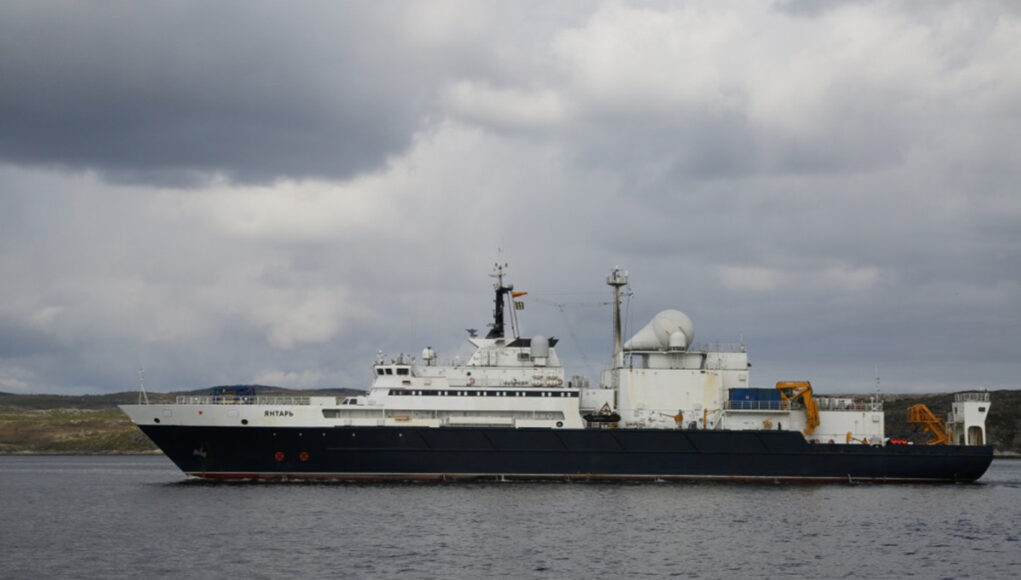



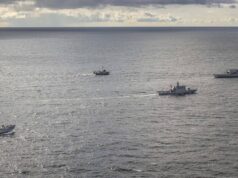


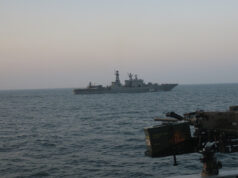
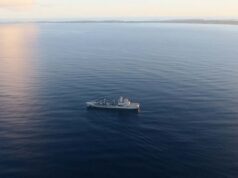
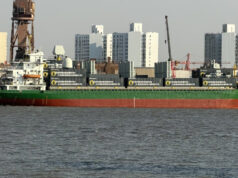


“The concerns come as the UK prepares to strengthen defences and global readiness through an integrated Strategic Defence Review…”.
Let’s see.
“We tracked them every mile of their circumvention and made sure that they knew we were watching.”
But, just to copperfasten their short sightedness, they’ve recently scrapped the survey vessels HMS Echo and HMS Enterprise , two ships that might have been useful in determining what, if any damage had been done to the cables, as well as selling off HMS Clyde, an OPV that would have been more suited to the task of ‘man marking ‘ the Russian vessel than a minesweeper.
We should make it very clear that any ship caught cutting or interferring with our cables will be sunk. It’s an act of war. We should have made that very clear decades ago.
And stop selling off or reducing our fleet at a time like this, older ships are still useful. This weakness being shown makes me so mad. The RN appears to be much too small and has lost its historical strength. We need to increase our submarine fleet by at least 50% I would have thought. We should have invested in submarines not aircraft carriers they are big targets that the latest missles can disable.in a mass attack quite easily methinks. I’m an armchair admiral so don’t be too harsh on me when taking apart my comment.
Lol you sound like me.
Is there any actual monitoring of what’s goimg on under this vessel? Via sonar, radar, video, underwater drones, diving teams? You need to get the evidence and catch them red handed. (pun intended)
Has this ship been given any warnings of its activities?
As usual, react to events. RN/NATO have lost the initive and resolve to project any will to stop soviet sabotage to UK’s communications. Led by spineless goverment.
Oh Mr Healey you are so tough. In just a few short months Healey has adopted even inch of the hubris that Blair locked into politics. We watched a ship sail by that we had no idea what it was doing or what it could do. God save us from macho Defence Secretary waffle. To be fair I think he has resisted being seen in combat gear so far unlike Sir Kier Starmer QC (lapsed)
It seems that the uk needs a strategic review for its military as we see more activity of Russia off UK shores lately, with heightened tensions. What’s needed is an idea of what infustructure needs protection out there and what can be done to protect it. Its just as important as what fuels and other imports the country needs to survive.
Alot of sense been said on here. Money needs ploughed into navy and sorted a.s.a.p
We are Russian jets fly stupidly close and do stupid maneuvers which could cause a crash.
So why can we not fire warning shots at them or perhaps go on with collision courses or near misses.
In fact as there in our waters we can board them.
ASDA assets are in our country we can freeze them.
This may be saver tooth and by papers I don’t know. Time to get really tough from Russia and I take any crap from them. If Putin wants to play this game let’s go in whole hog